The Constant Gardner
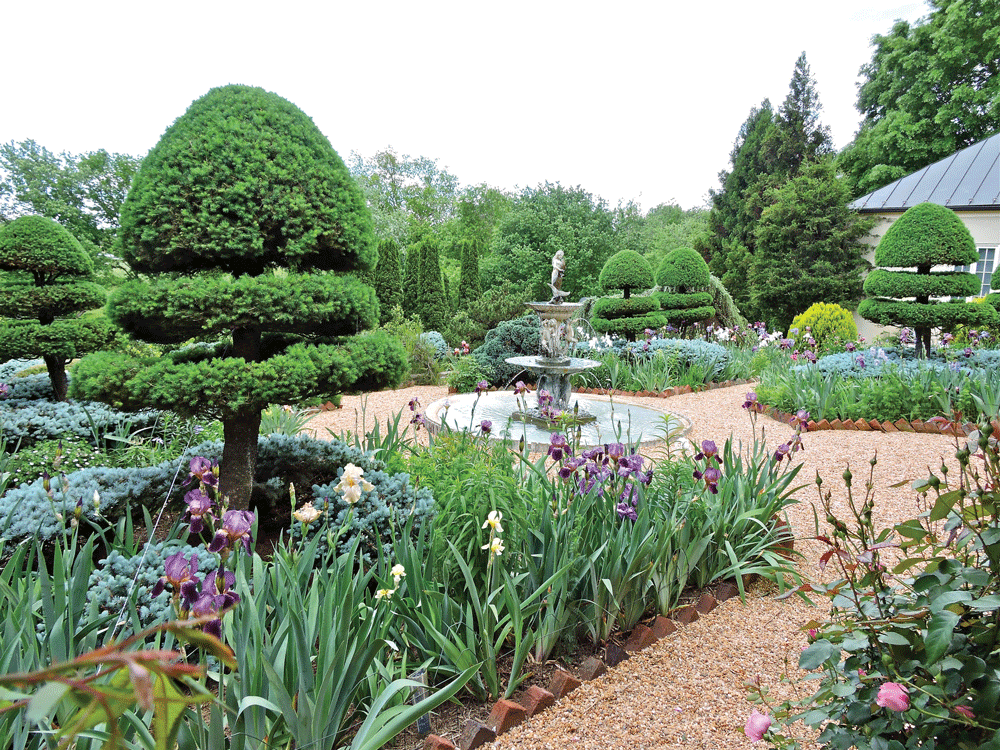
By Dulcy B. Hooper | Photos by Richard Hooper
“Some years are better than others,” said Margaret Gardner, talking about her garden and the evolving process by which it has taken shape. “And last year was not a good year.”
Gardner was referring to the epic hailstorm that hit Middleburg June 16, 2016, causing widespread damage throughout the area.
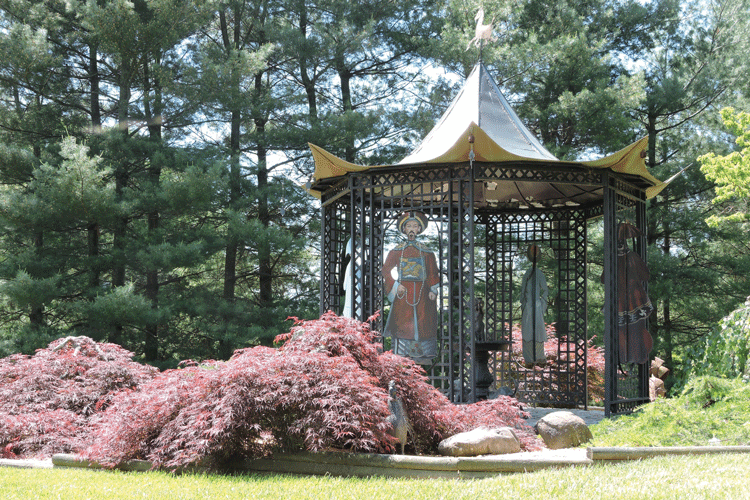
“My entire garden was just obliterated,” she said. “Hail that was the size of golf balls. I lost so much — all of my hostas, iris, evergreens; my entire vegetable garden. Even a 100-year-old maple tree was blown over.”
Gardner’s knowledge of gardening was acquired “by trial and error – and that means a lot of error.”
After stepping down as joint master of the Middleburg Hunt in 1994, Gardner stopped riding and took up gardening with a passion. “The last fall I took did it,” she said. “I knew it was time to stop.”
The grounds at Wingfield Farm are sloped, and so she began collecting Italian gardening books for inspiration. A few years into her gardening, she visited the Ladew Topiary Gardens in Monkton, Maryland, inspiring her to create her own topiary of the hunt.
“I designed it and still do all the trimming and shaping myself,” she said. “I did take some artistic license with the fox — I couldn’t reduce the width of the fox because it was an old Yew and the shape of the branches did not give me enough flexibility.”
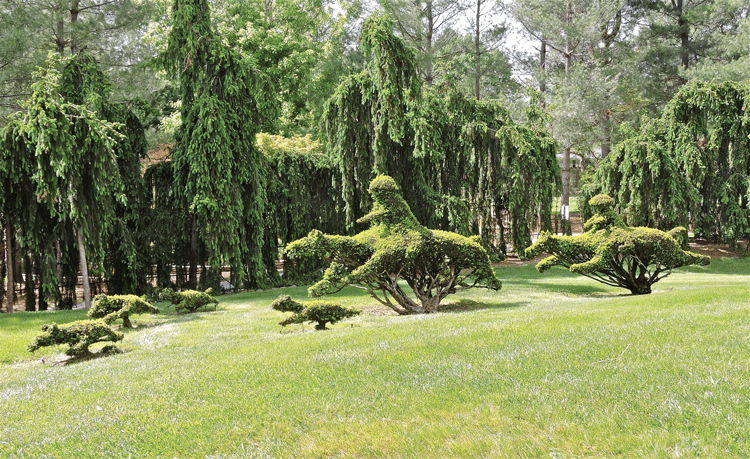
The hounds were created later, with younger, smaller bushes. “And no frames for anything,” she adds. “The entire thing was done free-form.”
One of Gardner’s favorites — and one of her favorite stories — is her monkey puzzle tree, a native to central and southern Chile (in fact, it is the national tree of Chile) that rarely does well in this area.
“For years, I had the monkey puzzle in a pot. It was outside in the summer, but had to be moved into the greenhouse every winter and back out every spring.” Eventually, she said, “No one wanted the job of moving the monkey puzzle — and for obvious reasons — they are very prickly. So, I stuck it in the ground and hoped for the best.”
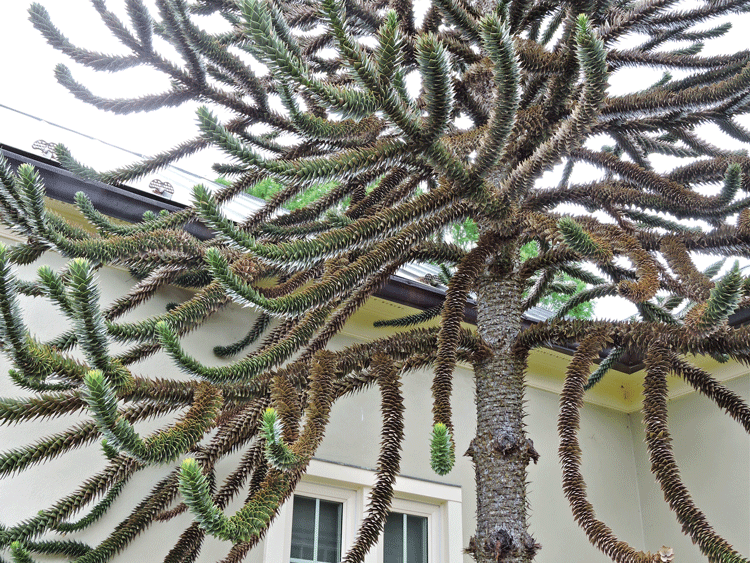
Her hope was fulfilled: the tree has thrived ever since. “There are maybe three that I know of in Washington,” Gardner said, “but nothing as big as this one.”
The gardens at Wingfield Farm cover some five or six lawns and a series of terraces. The lawns are home to pagodas, a Russian-inspired dacha with onion shaped domes, a small log cabin and various statuary.
Standing at the end of one lawn is an ornate facade that has been dubbed the Brighton Pavilion. It is a clever disguise for the rest of structure — a storage building for tractors, mowers and other farm and gardening equipment.
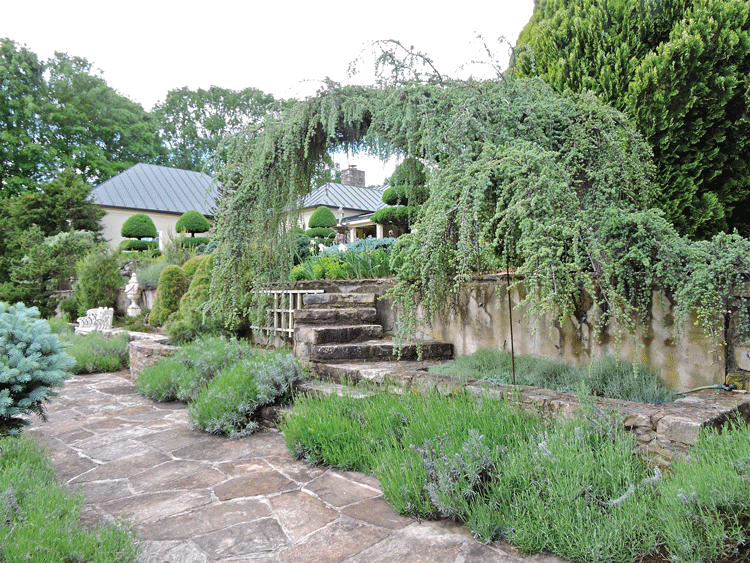
The terraces descend from the rear of the house (a former stable). The upper terrace has the largest planting of perennial flowers; the lowest is a lawn, home to magnolias, dwarf maples, ferns, rhododendrons, hostas and a host of other flora. It also includes an ancient apple tree. “It’s the only thing on the place that’s older than I am,” said Gardner.
The terraces defining the levels include walkways bordered with lavender and an area dedicated to statues representing the four seasons. The slopes separating the terraces are covered with rugosa roses, hydrangeas and boxwoods.
Flowers bloom throughout the growing season, shades of green shifting from spring into summer. Trees envelope themselves in autumn splendor. All the while, Margaret Gardner is trimming, taking out a row of shrubs, putting in new trees and relocating a set of steps. It is ever the work of Mother Nature and a constant Gardner and gardener. ML



